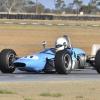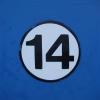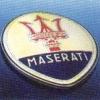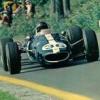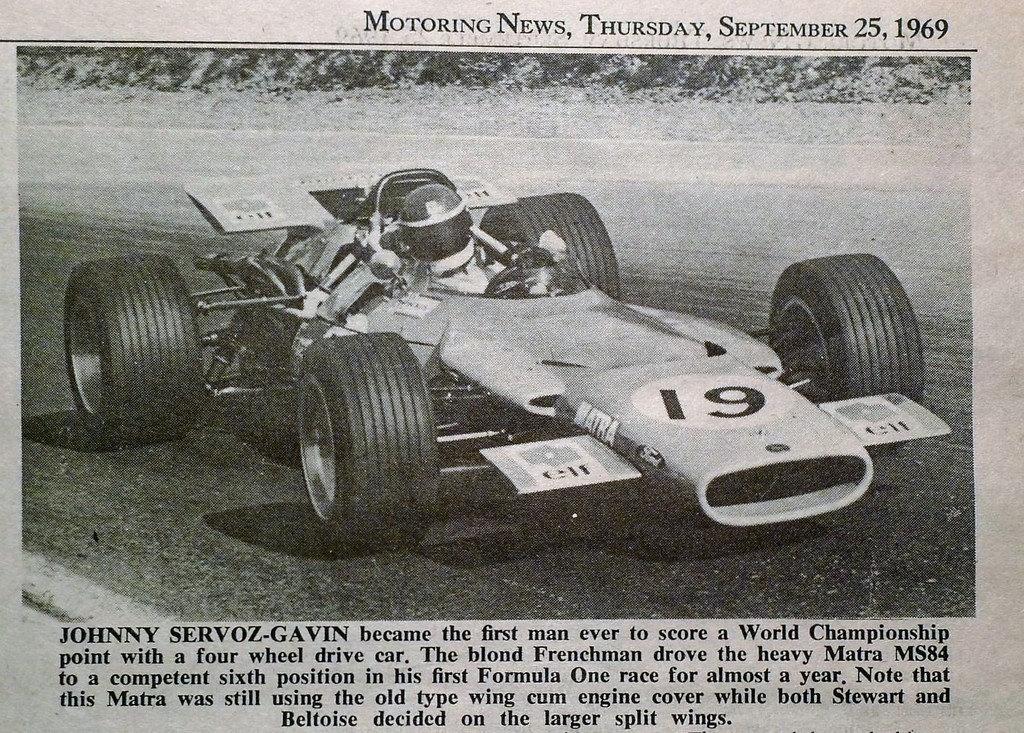With the Bluebird concidences of today, I may as well add another. I stumbled upon this while looking for something else.

And if John Cooper was still with us, he'd be 93 today.
Stephen
The photo is from 1963 unsuccessful attempt to set LSR at Lake Eyre. The driver of Elfin Catalina is Ted Townsend, a Dunlop tyre fitter. This Elfin chassis was built for Dunlop Tyres for use on the Lake Eyre salt to determine certain characteristics for the tyres that were fitted to Donald Campbell's Bluebird land speed record attempts during 1963. The Elfin was fitted with 'miniature Bluebird tyres" and driven over the salt to determine factors such as co-efficient of friction and adhesion using a Tapley meter. The Tapley Brake Test Meter is a scientific instrument of very high accuracy, still used today. It consists of a finely balanced pendulum free to respond to any changes in speed or angle, working through a quadrant gear train to rotate a needle round a dial. The vehicle is then driven along a level road at about 20 miles per hour, and the brakes fully applied. When the vehicle has stopped the brake efficiency reading can be taken from the figure shown by the recording needle on the inner brake scale, whilst stopping distance readings are taken from the outer scale figures.
It is believed that the Elfin was running a (relatively) normal pushrod 1500cc Cortina engine with A3 cam and Weber DCOE carburettors for the Bluebird support runs.
And yes, the number of Elfin's chassis was '6313'. Had Donald Campbell been aware of this? Certainly that could explain for him how on earth the torrential rain came to a place, where rain had not fallen in the previous 20 years...
Anyway when 1963 Bluebird record attempts were completed, the Bluebird Tyre designer Mr Andrew Mustard (of North Brighton, Adelaide) bought the Elfin from Dunlop. The Elfin was in quite poor condition as a result of its work on the Lake Eyre Salt, with the magnesium based suspension struts quite corroded. A restoration took place over the end of 1963 and into 1964, and a single Norman supercharger fitted. The vehicle was then used at Mallala Race Circuit, and for record attempts for 1500cc vehicles in 1964 using the access road alongside the main hangars at Edinburgh Airfield (Weapons Research Establishment) at Salisbury, South Australia. The northern gates of the airfield were opened by the Australian Federal Police to give extra stopping time. At this time the Norman supercharged Elfin had:
• a single air-cooled Norman supercharger, driven by v-belts and developing around 14psi. The v-belts were short lived, burning out in around thirty seconds,
• four exhaust stubs, with the middle two siamesed,
• twin Amal carburettors,
• a heavily modified head by Alexander Rowe (a Speedway legend and co-founder of the Ramsay-Rowe Special midget) running around 5:1 compression and a solid copper head gasket/decompression plate. The head had been worked within an inch of it’s life, and shone like a mirror. The head gasket on the other hand was a weak spot, lasting only twenty seconds before failing. As runs had to be performed back-to-back within an hour, the team became very good at removing the head, annealing the copper gasket with an oxy torch and buttoning it all up again... inside thirty minutes.
The Norman supercharged Elfin, operated by Mustard and Michael McInerney set the following Australian national records from it’s Salisbury runs on October 11th, 1964:
• the flying start kilometre record (16.21s, 138mph),
• the flying start mile record (26.32s, 137mph), and
• the standing start mile record (34.03s, 106mph).
This was not the Elfin’s only association with Norman superchargers. The Elfin was later modified to have:
• dual air-cooled Norman superchargers (identical to the single Norman used earlier), mounted over the gearbox. The superchargers were run in parallel, with a chain drive. The chain drive was driven by a sprocket on the crank, running up to a slave shaft that ran across to the back of the gearbox to drive the first supercharger, the down to drive the second. The boost pressure in this configuration had risen to 29psi,
• two 2" SU carburettors (with four fuel bowls) jetted for methanol by Peter Dodd (another Australian Speedway legend and owner of Auto Carburettor Services),
• a straight cut 1st gear in a VW gearbox. The clutch struggled to keep up with the torque being put out by the Norman blown Elfin, and was replaced with a 9” grinding disk, splined in the centre and fitted with brass buttons... it was either all in, or all out.
In the twin Norman supercharged guise the vehicle was driven by McInerney to pursue the standing ¼ mile, standing 400m and flying kilometre records in October 1965. Sadly, the twin-Norman supercharged Elfin no longer holds those records, as the ¼ mile and flying kilometre (together with a few more records) were set at this time by Alex Smith in a Valano Special.
The day following the 1965 speed record trials (Labour Day October 1965), McInerney raced the twin-Norman supercharged Elfincar at Mallala as a "Formule Libre" as there was insufficient time to revert the engine back to Formula II specifications. The photo below shows the McInerney in the Elfin at Mallala Race Circuit:
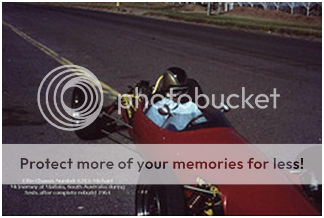
The car was used for training the South Australian Police Force driving instructors in advanced handling techniques, and regularly used at Mallala and other venues (closed meetings for the Austin 7 club, etc). It was sold by Mustard to Dean Rainsford of South Australia in 1966, though sadly without the Norman supercharger (by then it was running the mildly tuned Cortina engine again). The vehicle continued adding to it’s racing history, with Rainsford droving it to a win in the 1966 Australian 1½ Litre Championship Round 4 (the Victorian Trophy, Sandown, Victoria on the 16th of October 1966). In the ensuing twentysix years it passed through nine more owners before Rainsford re-acquired it in 1993. After many years of fossicking, Rainsford has located the original Mustard/McInerney supercharged engine used in the 1965 record attempts, but sadly without it’s Norman supercharger.


